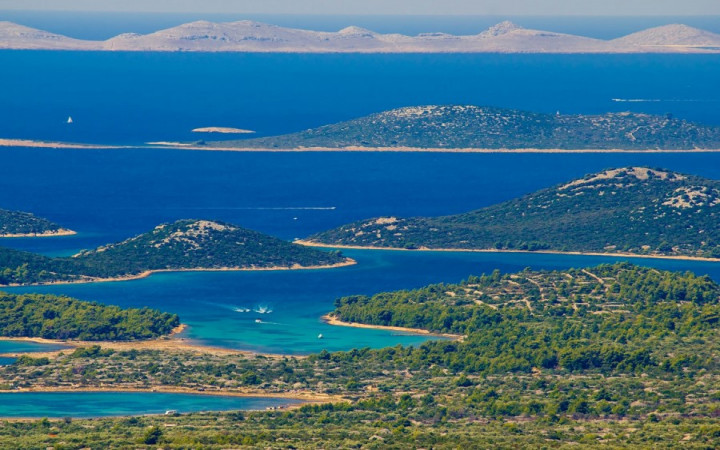Today’s Wonder of the Day was inspired by kuyfuri. kuyfuri Wonders, “how is a archipelago fomed” Thanks for WONDERing with us, kuyfuri!
Do you love the beach? Perhaps you’ve daydreamed from time to time about taking a long vacation in a tropical paradise. Maybe that daydream featured you swinging in a hammock on the shore. Some people even fantasize about owning a little boat they can use to hop from island to island. They imagine eating bananas fresh off the trees. They want to soak up the sun’s rays all day long!
Does this sound like the perfect plan to you? If so, your dreams might one day be fulfilled. How? By visiting one of the world’s many archipelagos! Archi…what? That’s right! We said archipelagos. That’s what we’re talking about today in Wonderopolis.
Archipelago is a geographical term. It’s a chain of islands scattered across a body of water. Archipelagos can be found in large lakes or rivers. But most of them lie in the world’s oceans.
How do archipelagos form? Many are the result of eruptions of volcanoes on the ocean floor. Scientists call these types of archipelagos island arcs. In these cases, several islands are often formed in an area known as a “hot spot.”
In these areas, the Earth’s crust shifted at some time in the past. However, the “hot spot” of volcanic activity didn’t move. As a result, volcanic eruptions formed an arc of new islands. This arc stretches in the direction the Earth’s crust moved.
The Hawaiian Islands are an example of an archipelago that is also an island arc. They sit over an active “hot spot.” The tectonic plate that lies under the area continues to shift northwest. This means there will continue to be new islands added to the current chain. It now consists of over 130 islands, reefs, and atolls.
Archipelagos can be formed in other ways, too. For example, some formed when the last ice age ended. Valleys amongst small mountain ranges along coastlines became flooded when the ice melted. This left a string of islands just off the coast of the mainland.
Still other archipelagos were formed as a result of a process known as post-glacial rebound. In these instances, land formerly crushed under the weight of massive glaciers. It expanded and restored its shape when the glaciers melted.
The more than 50,000 islands in the Archipelago Sea in Finland formed this way. The process is still ongoing. New islands continue to pop up even to this day. Many of the islands in the Archipelago Sea are tiny. Some take up less than an acre.
Where is the world’s largest chain of islands? It’s the Malay Archipelago, which sits off the coasts of Indonesia and Malaysia. It’s made up of more than 25,000 islands! This land used to be part of mainland Asia. It appeared when glaciers disappeared after the last ice age.
Do you live on or near an archipelago? If not, would you like to visit one someday? You’d have plenty to choose from. Several large countries are archipelagos. Some examples are Indonesia, Japan, the Philippines, New Zealand, and the United Kingdom. Vacationing on island chains could take you all over the globe!
Standards: C3.D2.Geo.5, NGSS.ESS2.B, CCRA.L.3, CCRA.L.6, CCRA.R.1, CCRA.R.2, CCRA.R.4, CCRA.R.10, CCRA.SL.1, CCRA.W.3, CCRA.W.7, CCRA.L.1, CCRA.L.2




